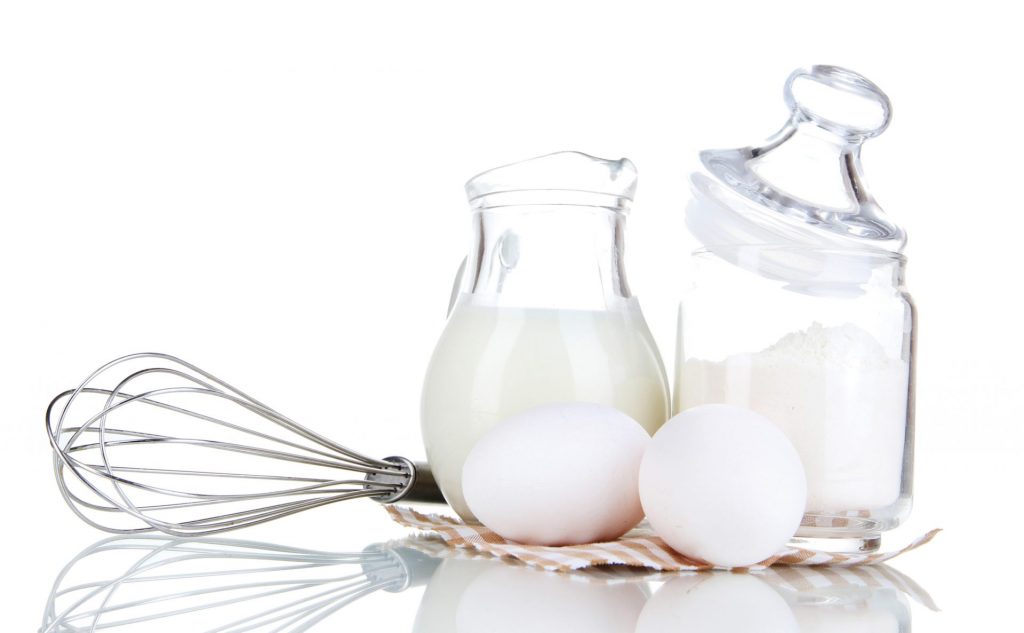Forget step-by-step instructions. For a craveable dessert made from scratch, you don’t need them.

I have a secret, a thought I’ve been caching for a while: I. Hate. Recipes.
There. I feel better now that I’ve confessed.
I’m a veteran food writer, I own at least 300 cookbooks and I’ve created dozens of recipes and taught cooking classes. And yet, covertly, I can’t stand recipes and almost never use them when I cook at home. The reasons: I don’t like being told what to do and I loathe measuring things—I’d rather wing it.
Yet, as a culinary instructor, I also know many folks are terrified not to use a step-by-step method. But I’m here to tell you it’s well worth the risk to liberate yourself from the rules and cook and bake by feel.
And bread pudding is an ideal place to start.
Bread pudding is intrinsically French toast on a grander scale, which means the formula is simple and a sizable segment of home cooks have made a version of it before. Often served with a sweet glaze or whipped cream, it’s just bread, eggs, cream or milk, spices and tasty mix-ins and toppings.
Start by choosing your baking vessel. Bread pudding can be prepared in any buttered loaf pan, square brownie pan or pie plate—or even individual muffin tins, where each can be customized for picky eaters. I use glass plates and pans so I can see when the bottom is baked.
Next, chunk or cube (or tear—remember, no recipe) enough bread to slightly overfill your pan. Fresh or dried out breads of any type work, such as hoagie rolls, corn bread, sandwich crusts, English muffins or challah. Leftover cinnamon rolls, muffins or doughnuts are also welcome.
(To get bread pudding that’s more custard-y, use fresh bread and bake it less. If you like it crusty and denser, use dried or toasted bread and bake a little longer.)
The custard you pour over top should totally saturate the bread. On average, you’ll use three to five large eggs and about a couple cups of heavy cream and/or milk—leave space for the whole thing to puff as it bakes. Need more liquid? Add more milk. Have dietary restrictions? Egg and milk substitutes and gluten-free breads work well. Short on time? Some cooks use pre-spiced eggnog. Other liquid additions that produce good results include sweeteners (like honey and maple syrup), spirits (from bourbon to Frangelico) and melted butter or oils. Mix the liquid ingredients with the bread in a bowl.
Then come the baking spices and extras: whichever catches your nose. I often sprinkle in cinnamon, nutmeg and cardamom, and sometimes brown sugar, fresh fruit, fig jam, toasted nuts, orange zest, dried tart cherries or grated chocolate. Add to the bowl or, later, pan in swirling layers.
Cover the bowl and allow the mixture to sit in the refrigerator for at least two hours. Put in the buttered pan and bake for about 30 to 45 minutes at 325 to 350 degrees, but a lot depends on your oven and pan. You don’t get to set a timer: You have to check on it often.
The nerve-racking part of improvised baking is you never know exactly what your dish tastes like until you serve it: The proof is literally in the pudding. But this comfy dessert almost always comes out great.
Once you “get” bread pudding, you’ll also enjoy freestyling baked frittatas; shakshuka, eggs poached in a tomato stew; creamy chowders with scallops and shrimp; and fluffy rice pilaf.
When the family finally tastes “your” bread pudding and asks for the recipe, just smile and say: “What recipe?”


